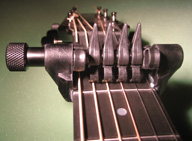 H
H
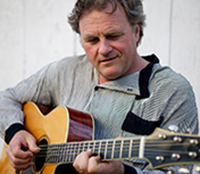
Harvey Reid & the Partial CapoThe partial capo is a new tool in the guitarist's toolbox, and Harvey Reid is largely responsible for most of what is known about it. Harvey has launched a website all about the partial capo at www.partialcapo.com
See Harvey's column about the partial capo in Premier Guitar Magazine The website at partialcapo.com is the best source of good information about partial capos. Reid has published 10 volumes of the Capo Voodoo series of partial capo books and recordings. These are the best source of information anywhere about where to put the capo and where to put your fingers to get the new music. For more complete explanations, lots of info and ideas about other kinds of partial capos and related materials, visit the web site. But while you're here, here is a real quick explanation of the partial capo. Click here for a growing list of Harvey Reid's recordings available on iTunes that use a partial capo. WHAT IS A PARTIAL CAPO? The partial capo is a tool for stringed-instrument players, and guitarist Harvey Reid is undoubtedly the musician who has done the most to develop and propagate the idea. The full capo has existed for centuries, as a way to raise the pitch of all the strings of the guitar (or other fretted instrument), though the use of a partial capo to clamp only some of the strings has never been a widespread idea, and may have originated recently. There are a number of kinds of partial capos on the market, each of which can do different things better than the others. We used to offer all of them for sale, including capos by Third Hand, Spider, Woodie's G-Band, Shubb, Planet Waves and Kyser. Harvey has completed years of research, and concluded by developing his own revolutionary, "next-generation" partial capo. He feels strongly enough that it is the only partial capo most of us need, since it does more things and fits more guitars than the other brands. Harvey also no longer recommends that people who are new to the idea of the partial capo get a "universal" (all combinations) capo and go exploring on their own. It's too easy to get confused and not find anything amazing. WHY USE ONE? Guitarists have used different tunings since the earliest days of guitar, and a partial capo similarly changes the landscape of what is possible on the guitar. Different fingerings and chords, and new music are possible when you use one, with the same skills you already have. You can find new chords and voicings you've never heard, new open-string resonances, harp-like scales, new drones and harmonics, imitate open-tuned instruments like banjo, dulcimer or harp, and go to new tonalities and modal worlds. WHO IS IT FOR? It is not just an idea for a certain level or style of player. Beginners, advanced players, childen, songwriters & singers and instrumentalists can all use one to make some new sounds. It is very useful for teaching beginners to strum chords, and it allows songwriters to find new voicings and chord sounds that sound fresh. Pickers can find all sorts of ways to arrange and create music using one. HOW DOES IT WORK It is not hard to modify existing capos to make partial capos, and there are a number of devices on the market that do a variety of things. A "universal" partial capo can clamp all possible combinations of strings. Single purpose partial capos are made that clamp only 1, 2 3, 4 or 5 strings in various combinations. Generally they all work at any fret, though sometimes a particular guitar has an unusual neck shape that makes some capos not work properly, especially high up the neck. HISTORY OF THE PARTIAL CAPO Though the whole story is not yet known and a lot of details are fuzzy, many things are known. |

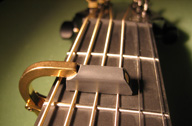
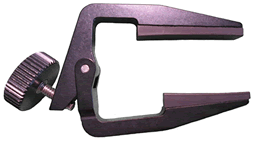

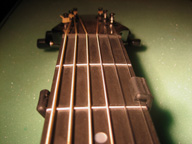 some ways to use a partial capo
some ways to use a partial capo 